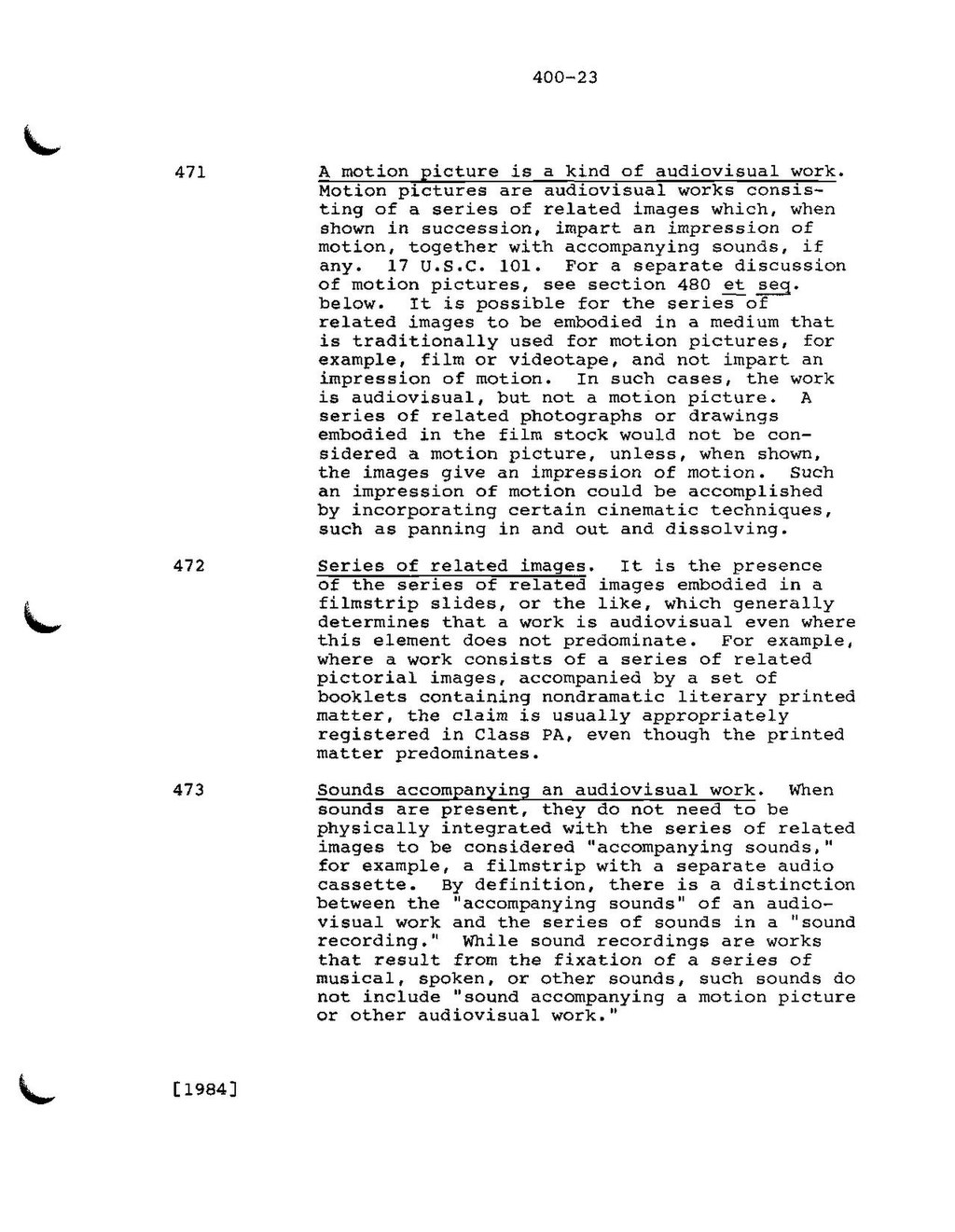400-23
471
A motion picture is a kind of audiovisual work. Motion pictures are audiovisual works consisting of a series of related images which, when shown in succession, impart an impression of motion, together with accompanying sounds, if any. 17 U.S.C. 101. For a separate discussion of motion pictures, see section 480 et seq. below. It is possible for the series of related images to be embodied in a medium that is traditionally used for motion pictures, for example, film or videotape, and not impart an impression of motion. In such cases, the work is audiovisual, but not a motion picture. A series of related photographs or drawings embodied in the film stock would not be considered a motion picture, unless, when shown, the images give an impression of motion. Such an impression of motion could be accomplished by incorporating certain cinematic techniques, such as panning in and out and dissolving.
472
Series of related images. It is the presence of the series of related images embodied in a filmstrip slides, or the like, which generally determines that a work is audiovisual even where this element does not predominate. For example, where a work consists of a series of related pictorial images, accompanied by a set of booklets containing nondramatic literary printed matter, the claim is usually appropriately registered in Class PA, even though the printed matter predominates.
473
Sounds accompanying an audiovisual work. When sounds are present, they do not need to be physically integrated with the series of related images to be considered "accompanying sounds," for example, a filmstrip with a separate audio cassette. By definition, there is a distinction between the "accompanying sounds" of an audiovisual work and the series of sounds in a "sound recording." While sound recordings are works that result from the fixation of a series of musical, spoken, or other sounds, such sounds do not include "sound accompanying a motion picture or other audiovisual work."
[1984]
